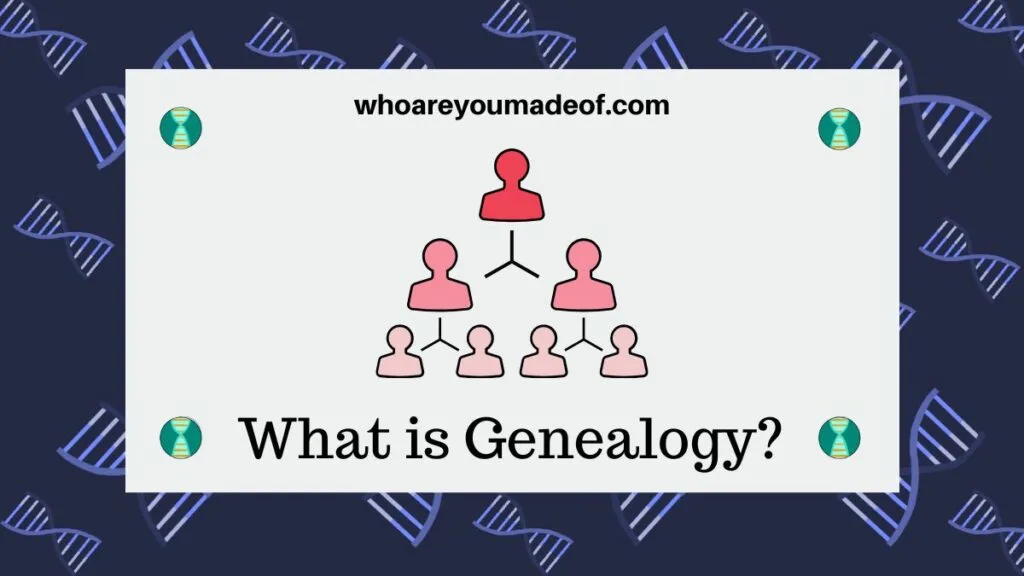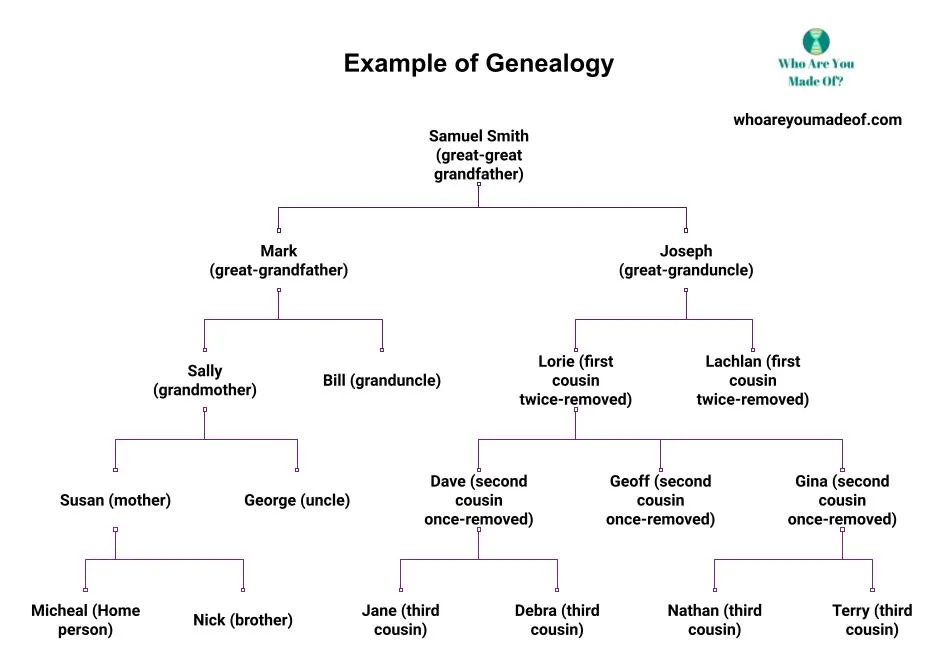Maybe you have heard of genealogy, but you aren’t quite sure what it is. In this article, learn the definition of genealogy, find examples, and learn how it works.

There are many misconceptions when it comes to genealogy. If you are new to the idea of working on a family tree, learning genealogy, or discovering how fun family history research can be, I hope that this article helps clear things up and point you in the right direction.
What is the meaning of genealogy?
Genealogy means the study of the history of a specific person or family and the lines of descent from all ancestors of that family. Most of the time, genealogy research is done by beginning with a “home” person and their direct ancestors, such as parents, grandparents, and great-grandparents.
As the researcher increases their skill and knowledge about the family they are studying, they will likely begin to include collateral relatives in their searches. Collateral relatives are the siblings of our ancestors, such as the brothers and sisters of our grandparents, as well as their descendants.
Studying these extended family members, which might include second, third, and fourth cousins, can help us learn a lot about our family and discover important clues about our ancestors.
Usually, genealogy is performed by amateur hobbyists. However, there are also many paid professionals, some self-trained and others formally educated in genealogy research methods, who will perform genealogy research on behalf of a client.
I am a huge supporter of everyone learning how to do their own genealogy and family history research. It is a fun and rewarding hobby, and doesn’t have to be expensive. There are many free websites to find family tree records, and you can always build your tree for free on sites like Ancestry.
Is genealogy a science?
We often think of words that have the “ology” ending as describing a scientific occupation, so is genealogy a science? Yes, genealogy is the science of researching a specific family history.
Experts in genealogy, which include those who have been formally trained, but also those who are self-taught and experienced, follow strict rules for the collection, evaluation, and citation of evidence.
The skills and knowledge required to be a good genealogist are gaining respect in other fields. For example. with the development of DNA testing, genealogists have even been consulted as experts to solve crimes.
Is genealogy the same as ancestry?
Genealogy is related to ancestry, but they are not exactly the same thing. Ancestry is usually used to refer to where our family comes from, in general, or our ethnic heritage.
For example, a person’s ancestry could be described as the general region, or regions, of the world where their ancestors came from. They might say that they have “Nigerian and British ancestry”.
However, someone’s “genealogy” will typically refer to the study of their exact ancestors going back as far as possible. In other words, someone’s ancestry might be English, but their genealogy could indicate they are descended from William the Conqueror, and thus, Charlemagne.
Is a family tree the same as genealogy?
A family tree is a product of the work of a person who does genealogy. A family tree researcher or genealogist will collect information that they gather from genealogy records and organize it into a family tree.
You might notice that I didn’t call a family tree a “finished product” of genealogy research. This is because those of us who like to study our ancestors find that our work is never really completely finished.
However, most people do have goals when it comes to what they would like to accomplish during their genealogy research. For example, most Americans have ancestors who came from a different part of the world, and many American family tree researchers have a stated goal of wanting to know the place where all of their immigrant ancestors were born.
Once they accomplish this, they might compile their research into a family tree and distribute it, along with the records and photographs that they acquired during their work, to members of their family.
What is an example of genealogy?
When looking for an example of genealogy, you probably expect to see some sort of chart. This is because genealogy research is best organized in a chart form, such as a family tree or pedigree chart.
The sample chart below shows an example of a genealogy or family tree chart that shows only the biological descendants of a hypothetical Samuel Smith. The “home” person of the chart is Micheal, who is show in the bottom left of the chart.

Everyone on the chart is a direct descendant of Samuel, the great-great grandfather of Micheal. However, everyone on the tree has a specific relationship to Micheal that depends on how many generations they are descended from Samuel, and that relationship is specified in the chart.
For example, you will note that everyone who is also a great-great grandchild of Samuel is Micheal’s third cousin. Those who are one generation more closely descended from Samuel are Micheal’s second cousins once-removed.
The only exceptions to this are Nick, who is Micheal’s brother, Susan, his mother, and George, his uncle. These individuals have a different relationship to Micheal because they are descended from Sally, Micheal’s grandmother, who is a more recent common ancestor than Samuel.
The chart also includes Micheal’s first cousins twice-removed, Samuel’s grandchildren who are not direct ancestors of Micheal, as well as Joseph. Joseph is Micheal’s great-granduncle because he is Samuel’s child and was the sibling of Micheal’s great-grandfather, Mark.
Conclusion
I hope that this post has helped you understand everything that you wanted to know about the meaning of genealogy, the difference between genealogy and ancestry, and that you learned from the examples of genealogy included here in this article.
If you have any questions about something that you read here, or if you have a specific question about genealogy, I would love to hear from you in the discussion below.
Thanks for stopping by today!
